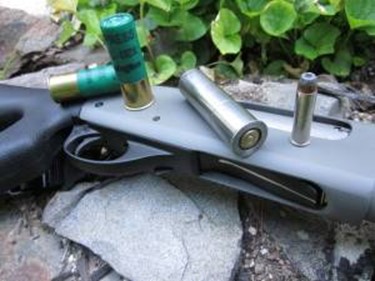
There is little doubt in anyone’s mind that when it comes to the one-gun prepper arsenal, the shotgun reigns supreme. King of the hill, my boomstick, baby!
If you scroll through the comments, you probably will find mention of a specific item that increases a shotgun’s versatility exponentially – the chamber adapter. Essentially a slug of metal that has been machined into the profile of a shotgun shell, it has a chamber for one of many, many calibers bored out of the middle. It allows you to chamber a different caliber – from .22 Short all the way to a smaller shotgun shell size, say .410 in a 12-ga – and safely fire it in your larger-bore shotgun. There are also chamber adapters for rifles; my brother has one that allows him to shoot .25 ACP out of a .250-3000 Savage. The caliber choices are extensive; pretty much all your standard pistol-caliber rounds are covered, as well as this company making a kit that allows you to shoot .223/5.56mm, 7.62x39mm, and even .308 Winchester in your 12 gauge. Prices range from a few bucks to over $100, depending on if you want a long-“barreled” sleeve-type adapter that’s rifled, or the style that I got, the “snubnose”, if you will.
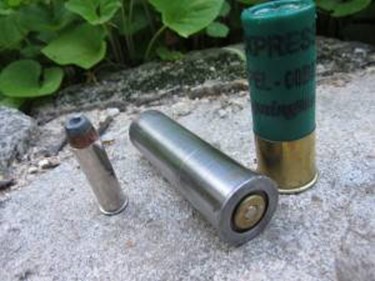
I’d been wanting to try one of these babies out for some time, so I basically stopped hemming and hawing and grabbed one off Amazon on the cheap. After all, if it sucks, you probably shouldn’t pay a lot for the suck, right? Right. I ended up purchasing a 12 gauge-to-.38 Special/.357 Magnum adapter from Tru-Bore on Amazon. With shipping, it showed up at my door a few days later, for the paltry sum of just over $31. I didn’t expect much, and once I opened that package, I’m glad I didn’t: at first glance it wasn’t terribly impressive. A nicely machined piece of steel, but that was about it. I secretly had hoped it would be rifled, but I knew deep down it wouldn’t be, and I was right. It’s a smooth bore, and it measured out at .360″ inside the bore. Hmmm…a standard .357/.38 bullet is .358″. Sounds to me like an unstabilized bullet….the bullet has .002″ of wiggle room in the bore of the “barrel” of the adapter.
Yup, definitely a smooth-bore! .002″ may not sound like much, but it’s enough to make that bullet bounce around down that bore like a BB in a coffee can, de-stabilizing the projectile. More on that later.
The back of the “shell” is recessed for the rim of the .38/.357 cartridge. It has a little extra room around the rim for a fingernail, knife blade, or some other plucking accoutrement to retrieve the spent empty cartridge from the adapter. (Unfired cases drop in and out with ease, but fired cases expand and stick inside the chamber of the adapter.)
My trusty digital calipers mic the length of the adapter at 2.7315″. With a Winchester .357 Magnum 125-grn JHP measuring 1.5650″, that leaves a “barrel” length of 1.1665″, or just over 1 5/32″. That isn’t much; the average J-frame Smith & Wesson barrel length is about 2 inches. So don’t expect rip-snorting velocities out of the adapter. Sadly, my chronograph is currently being borrowed by a friend, so I couldn’t clock bullet velocities. Future report, I guess; my apologies.
Upon initial inspection, one of the first things I noticed is that the leading edge of the “shell” is very sharp; I took a touch of emery cloth to take the edge off so it wouldn’t scar up the innards of my shotgun. For the first test, I broke open my Winchester 101 over-under shotgun to see how the adapter fit. THUNK…dropped right in the chamber satisfyingly. I went to close the action, and, what do you know? The action wouldn’t shut. I sat there playing with it, and couldn’t come to any real satisfying conclusions as to why it wouldn’t shut. I can only imagine the ejector system may have been causing the problem; break-open guns I tried it on with no ejectors worked fine. It also chambered pleasingly in my Remington 870; I didn’t try it through the action, though, because the weight of the shell plus the sharp edges might have made it catch in the action or jam up. I didn’t feel like disassembling an 870 in a sandpit, so I made a decision to just use it single-shot. It’s not like you’re going to fill the magazine up with these things; the unfired cartridges slide right out without any effort and would surely bind in the magazine and action. This baby is relegated to break-open style guns or single-shot use out of a repeating shotgun.
RANGE REPORT
I couldn’t wait to try this thing out on the range. Reviews I’d read said not expect much in the accuracy department; I didn’t. Lots of factors effected this in my mind: lack of rifling was the biggie, along with the short barrel length, and the lack of precise aiming equipment on the shotgun; all I have on my test 870 is a Meprolight tritium bead. Not exactly a 12 power Leupold…
…but it would have to suffice. With a pistol-caliber cartridge like the .357 Magnum, you have to be realistic: you’re probably not going to be making 100-yard head shots on running antelope. I envision the use of this to be close-range defense to be used in lieu of precious shotgun shells, putting down a nuisance/sick animal perhaps, or one you have in a trap or snare. Maybe with bigger calibers that pack more horsepower, you could hunt deer at close ranges in my mind. But that depends largely on how it performs on target.
My son and I loaded up the gear, and a target stand and some targets, along with a handful of the aforementioned Winchester 125-grn JHP rounds, and a box of .38 Special +P handloads: a 158-grain lead semi-wadcutter (LSWC) at about 850-900 feet per second. After setting up the target stand with targets and getting everything and everyone ready for a hot range, I paced off 10 paces, about 30-32 feet, depending on how sprightly I feel. I slipped in a .38 handload, dropped the works in the chamber of the 870, and closed the action. Everything locked up fine, the shotgun went fully into battery.
I lined up a steady 6 o’clock hold on the target (putting the aiming point of the target directly ABOVE the bead. It makes aiming more precise when your sighting device covers the target) and slowly pressed the trigger. Pop! The round went off, with practically no recoil. It was pretty underwhelming, actually…but hey, there was a hole in the target, surprisingly close to the bullseye, as well! Interesting. I slowly opened the action – the adapter engaged the extractor on the bolt just fine and the ejector popped it out of the ejection port with no fuss.
The fuss came when I tried to use my fingernail to extract the spent case. NOPE. A stiff shake. NOPE. Finally I pulled the felt-tip pen that I was using to mark the target out of my pocket (never did like prying with the point of a knife) and pushed it down the muzzle end of the adapter. With a tap, the .38 case dropped out. Folks, this is definitely not a rapid-fire setup. We eventually settled on a locally-sourced (read: the ground at my feet) free-range organic stick to pop the empties out of the adapter. I will say that after about 50 rounds, the empty cases usually dropped out with a firm shake or a tap on a rock…maybe a little bit of firing residue made the difference?
I repeated the process two more times for a three-shot, 10-yard group:
You’ll notice two things about this group: #1: actually pretty damn good accuracy; far better than I’d expected. The black Shoot-N-C target is 6 inches in diameter, making the 3-shot group under two inches. That’s not terrible, folks: that’s minute-of-rabbit and possibly squirrel if you can get either to sit still long enough to draw a bead and really concentrate on trigger control with crappy shotgun triggers.
The big thing you should notice, though, is that the bullet holes aren’t round. If you look carefully, the bottom two are pretty much exact outlines of the profile of a .38 Special bullet. Yep, they struck the target SIDEWAYS. These bullets are “tumbling”, or spinning end-over-end due to improper stabilization from an oversized bore and no rifling. At 30 feet, this isn’t too much of an issue, however, accuracy will almost certainly degrade very quickly as the range increases. It also means that the bullet will not strike the target nose-on, which is the way bullets are designed to strike; hollow-point bullets only expand if they push into target substrate hollow-point first; same with jacketed soft point bullets. So, you certainly will not get the terminal effectiveness that you could get with a properly-oriented bullet. I COULD make an argument that tumbling bullets will continue to tumble through target flesh and bones (the 5.56mm military cartridge was supposedly designed to do this to help make up for its small diameter), but if I have a dedicated high-performance hollow-point bullet, I’d like it to work as intended. However, knowing that the bullets tumble, I will in the future use heavier, longer full-metal jacketed or all-lead bullets that will be more terminally effective with tumbling. Work with what you got, right?
We stepped back to 15 yards and I let my son give the setup a go.
He thought the whole idea was pretty cool, and really enjoyed the adapter. His groups at 15 yards were almost as good as mine at 10:
Again, a nice consistent tight group, and again, more tumbling. But the accuracy was really far better than I’d hoped for by a long shot. I’d expected the group size to increase exponentially, but it was staying clustered together nicely. So we stepped back to 25 yards, and I got behind the 870 again. I loaded up the Winchester 125-gran JHPs. Holy crap; three shots went into almost the same hole at 25 yards! So, we went back to 40 yards to see how things worked at what I’d previously considered to be “yeah, right” distance. I was getting a bit more optimistic, I will admit.
This time, I sat down to make sure I was getting consistent accuracy with a solid seated position. Again, 6 o’clock hold, really working the trigger produced better than expected results. I fired 5 shots this round.
You can see the .357 25-yard group at upper left; the 5-shot 40-yard group is laid out in thick magic marker outline. We were now getting to be the outside edge of the practical range for the adapter. The group was about 8-9″ across at its widest point; the vitals area of a mature whitetailed deer is generally considered to be about that size. I was very pleased with the group, however. I’d fully expected to be off the paper completely at this distance; yet rather I got a useful-sized group that shows decent consistency reasonably close to the point of aim.
For yuks ‘n’ giggles, we opened up at a large prominent rock at the opposite bank of the sandpit.
Yeah, forget about it. The bullets hit the ground about 6-10 feet in front of the target, and then bounced into the bank in a depressingly huge pattern. Even with the proper holdover to get the bullets to impact the target area, you’d be lucky to hit a 15-passenger van or a literal barn door at 125 yards. At 75 yards you’d be lucky to hit a normal-sized entry door to a house.
CONCLUSIONS
I must say, I was very surprised by this milled-out hunk of steel. I went in expecting this to be a close-to-useless range toy or conversation starter, but ended up walking away thinking there was actually some utility to this chamber adapter.
Granted, you have an envelope to work inside: I’d say 40, 45 yards MAXIMUM is the effective range of this adapter in .357 or .38 Special. Its limiting factor is the short “barrel” length and complete lack of rifling to stabilize the projectile. Sights (or lack thereof) MAY have been holding back the accuracy a bit, but not much. At 45 yards, the bead of a shotgun at a 6 o’clock hold worked reasonably well – and I’d be willing to bet that most prepper-utilized shotguns will have a standard bead-type sight. I have plans in the works to mount a red dot electronic sight to a shotgun soon; I’ll post a report (with velocities) eventually to see if it actually helped.
If all I has was my 12-gauge, you can bet sure as hell that I’d have these adapters in a couple common calibers, such as .22 LR, 9mm, .38/.357, and maybe something like .45 ACP or .44 Magnum. With every adapter you purchase, you increase ammo availability exponentially. Sure, you won’t have a rapid-fire tactical shotgun, but for the guy who owns a farm or who only wants one gun that’s not a “black gun” so he doesn’t cause a stir, this is a great way to increase your effectiveness with a single firearm. I can see the maximum effectiveness with these adapters coming from a break-open type shotgun with no ejectors; if you only have one adapter, you don’t want it to go flinging over your shoulder at high velocity in the woods after you take a shot at the only meat you’ve seen in days. Keep it captive in the chamber (a rubber O-ring system would really help here…hint, hint, Tru-Bore) and have a small flat headed screwdriver or dedicated prying tool to pop the empties out and you’ll up your fire rate quite a bit. This adapter would work out beautifully for the man with a double shotgun: a side by side or over/under. One barrel would have a standard shotshell in case of a flying bird, the other a chamber adapter with a caliber that offers more punch and precision in case of a deer, coyote, or badguy pops up.
There’s really no down side to having one of these and a handful of pistol-caliber cartridges in your shotgun kit. For 31 bucks, it was worth every penny in my book. I reload for the .357 Magnum, and have several handguns in that caliber – and it’s a very popular caliber here in rural Maine, so ammo should almost always be around or at the very least not a hassle to obtain or load for.
Bottom line: Chamber adapters increase the utility and versatility of your shotgun, and therefore your survival probability in a SHTF situation. I’m getting more. If you have a shotgun, you’d have a hard time making an argument to NOT get one or two to keep with your survival kit.
As a side note: you love shooting, right? So why wouldn’t your kids? Be sure to take your children (or, if you don’t have children, take your nephews, nieces, neighbors, whomever!) to the range with you. Teach them to respect the power of the firearm, and how to handle one with the utmost safety and concern for human life. If you start young and teach them properly, you’ll have someone who’s with you all the time who you can trust with a firearm, and a hunting/foraging buddy whose company you’ll always enjoy, and will help you drag game out of the woods, or just provide quality companionship while plinking empty soda cans with .22s at the range. I started my son when he was 7, and now, many years later, he is a fine shot and a respectful, safe young man with a firearm; I couldn’t be prouder.
So get out there, have fun, train, and BE SAFE!
Start now to make sure you are staying prepared.
Via: shtfblog




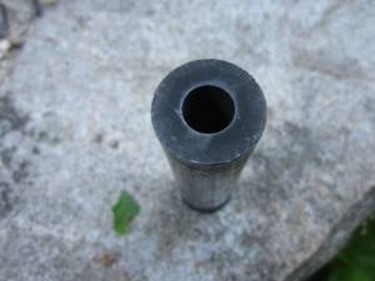
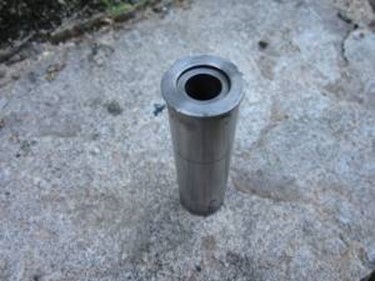
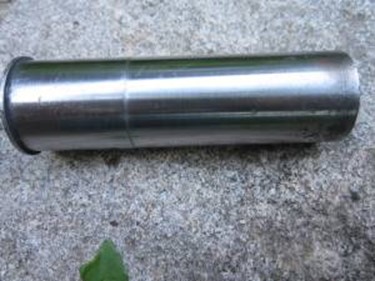
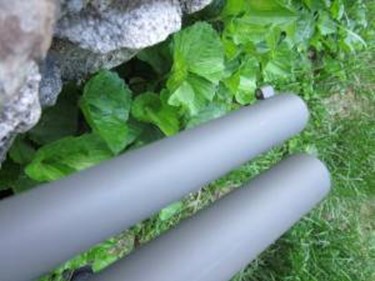
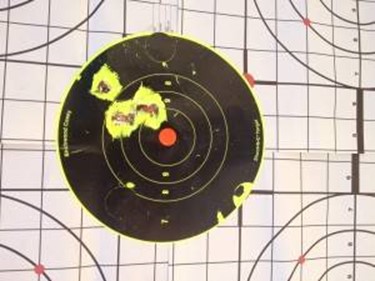
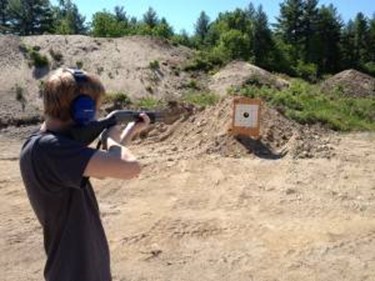
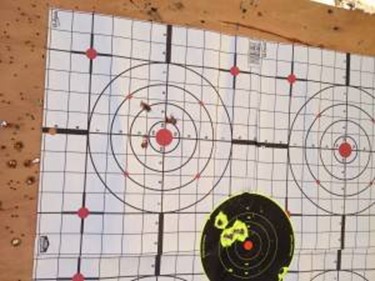
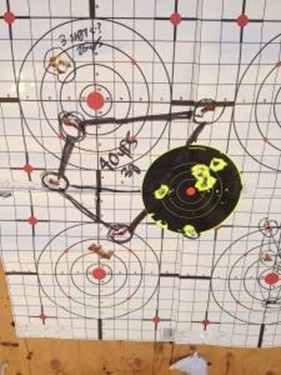
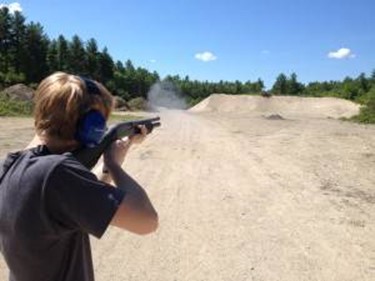
 Follow
Follow
Leave a Reply